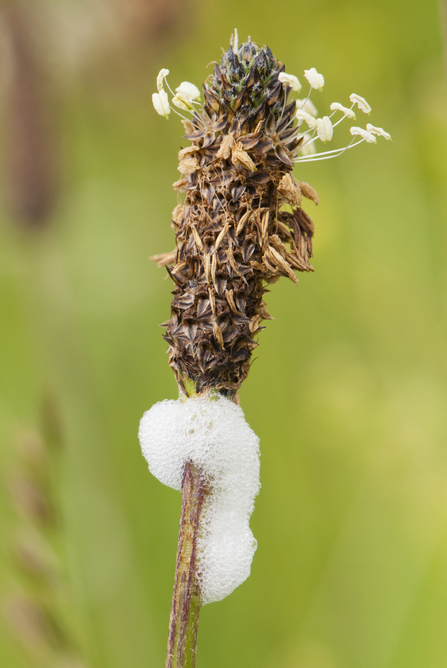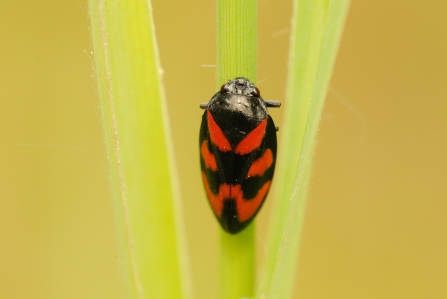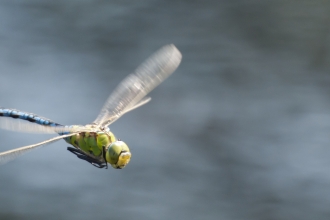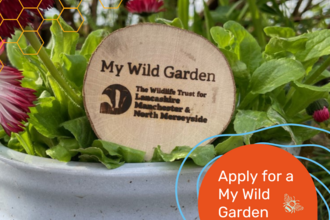This weird, sticky foam seems to be all over plants and grass at this time of year, but all it takes to uncover the mystery is a little gentle investigation.
What is cuckoo spit?
Charlotte Varela

Cuckoo spit by Katrina Martin/2020VISION
What is cuckoo spit?
Cuckoo spit is essentially plant sap that has been ingested by the creature that hides inside it. The creature forces air into the fluid it has ingested and then squeezes the bubbles out through its bum!
To discover what creates these foamy bubbles, simply find a blob of cuckoo spit, crouch down next to it and very delicately swipe it onto your finger. Keep carefully rubbing the bubbles away and you’ll soon discover a tiny (and we mean tiny, so be careful!) little creature that looks something like a green grass seed. Look closer, however, and you’ll notice legs and the black pin-pricks of eyes: it’s a froghopper nymph!
What is a froghopper nymph?
The froghopper nymph is the larva of the adult common froghopper, otherwise known as a ‘spittlebug’. Common froghoppers are small, brown insects (only around 6mm long) that can jump incredible distances to escape threats. In fact, these insects can accelerate to more than 14km per hour in just a millisecond, and a froghopper jump has been recorded as high as 70cm. That’s similar to a human jumping over a tower block!
The jumping ability of spittlebugs means they can very easily evade predators, but their larvae can’t jump. This is where cuckoo spit on plants comes in – the froghopper nymphs use the bubbles they excrete to not only keep moist, but hide themselves from anything that might want to eat them.

Red and black froghopper by Amy Lewis
Types of froghopper in the UK
There are a number of different froghoppers in the UK, with the common froghopper being the most numerous and the one you are most likely to see. They can be anything from a mottled beige colour to dark brown and even black.
The most distinctive froghopper in the UK (and indeed in Lancashire, Manchester and North Merseyside) is the red-and-black froghopper. As its name suggests this spittlebug is a really striking mix of red and black, but unlike the common froghopper, its nymphs are rarely seen. Rather than living above ground in cuckoo spit they tend to grow up underground, feeding on plant roots.
Have you spotted any cuckoo spit? Why not head outside and see if you can find what lives inside these foamy blobs?




